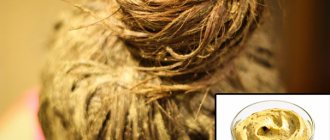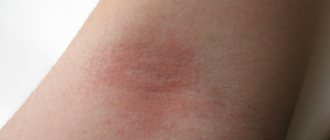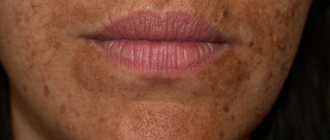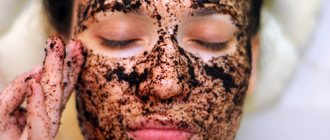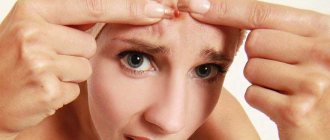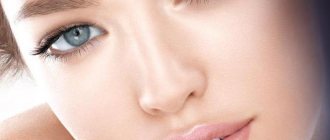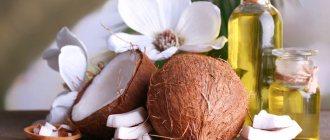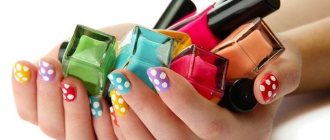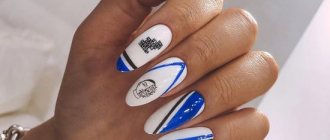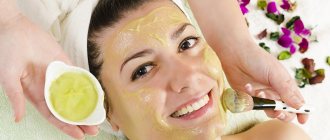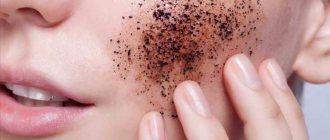Aloe juice can be used fresh without any additives, or you can prepare mixtures, masks, tonics, solutions, extracts. I’ll tell you how to do this and how to extract the maximum beneficial properties and qualities from the plant in this article. The most important thing is to follow some rules and techniques so that the result is worthy and useful.
Features of the plant
In Latin this plant is called aloe barbadensis miller. It is from the family of lilies, cacti, and succulents. Aloe grows in the desert regions of the African, Eurasian, North and South American continents.
It is unique in its range of bioactivity - from effective wound healing to the destruction of many types of microbes. And most importantly, aloe vera is suitable for everyone, including allergy sufferers and those with hypersensitive skin.
Chemical composition
This foreign cactus, familiar to us since childhood, contains over 200 active substances and 70 nutrients. Among them:
- Vitamins A, C, E, B1 - B6, B12;
- Succinic, cinnamic, amino and other acids;
- At least 30 mineral elements - calcium, copper, selenium, manganese, phosphorus, iron, chromium, potassium, zinc, magnesium;
- Phytoncides, flavonoids;
- Essential oils, esters;
- Alkaloids;
- Resins and tannins.
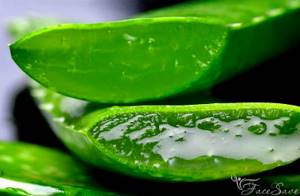
There is another wonderful ingredient in aloe vera, for which cosmetology adores it - allantoin. It is a conductor of benefits: it penetrates into the deep layers of the skin and “brings” other healing substances there.
Another value of agave in the eyes of doctors and cosmetologists is polysaccharides. It is thanks to them that the plant has a pronounced moisturizing effect. The invisible polysaccharide coating literally attracts water and prevents it from evaporating, dehydrating the cells.
How aloe is good for facial skin
Of course, if the cause of your skin problems, for example, is in the internal organs, the first thing you need to do is cure them. But even then the plant will significantly speed up recovery. All its qualities cannot be counted: antiviral, antifungal, restorative at the cellular level. What agave can do for the face:
Nutrition and hydrobalance
Despite its rich composition, more than 95% of aloe gel is water. Thanks to this, the hydration is enormous, but without the feeling of stickiness or greasy. The absence of a sticky effect does not interfere with the gluing of the upper cells of the dermis, which helps to smooth and soften them. It also retains moisture extremely effectively.
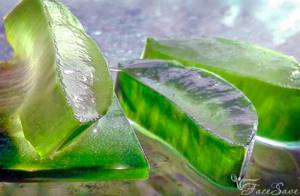
Tissue healing
The notorious polysaccharides stimulate the growth of new cells and actively restore damaged tissue. Carboxypeptidase is an element that perfectly relieves pain. It is also found in aloe vera. Therefore, the juice of the plant is good to use for skin burns of any origin and mechanical damage to tissues.
Inflammation
Many skin problems involve redness, itching, irritation and pain. Agave gel contains acemannan, a substance that can suppress inflammatory processes. Before treating inflammation, test the agave extract on another area of the skin: depending on the cause of your illness, the reaction may be different, even allergic dermatitis.
Pimples
Aloe vera can replace a dozen cosmetic products for various skin imperfections. Thanks to salicylic acid in the composition, it cleanses pores and regulates sebum production. Acne responds well to treatment due to its anti-inflammatory and antimicrobial effects. In addition, the properties of the plant gradually help to dissolve scars and dark circles left from acne of any kind.
Herpes
This antiseptic plant not only stops fungus and microbes due to phenols, sulfur, and salicylic acid in the composition. Aloe helps the immune system produce antibodies to destroy the herpes virus. At the same time, the effects of the virus heal without leaving traces.
Age-related changes
Charges fibroblasts with energy, thereby activating the production of collagen and elastin. This makes the dermis elastic, smooth, elastic. The astringent properties of zinc narrow enlarged pores, and vitamins C and E (detoxifiers) act as a preventative against the accumulation of free radicals.
Dark spots
Aloe vera juice launches a complex mechanism to combat the aging of the epidermis. Reduces the activity of tyrosinase, an enzyme that is responsible for the color of the skin. This helps inhibit hyperpigmentation caused by UV radiation. It also hardens the skin from the effects of sunburn.
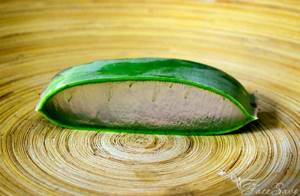
Scrubbing
Multifunctional salicylic acid gently exfoliates dead cells. And lignin - another miracle substance in the composition of agave - promotes deep penetration into the dermis.
Interesting: How to do facial peeling with salicylic acid in a salon or at home.
Growing at home
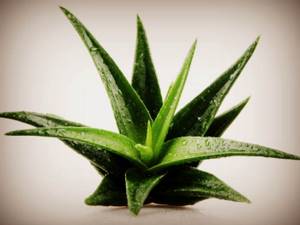
The best option to have a rejuvenation product at hand is to plant the plant at home, like an indoor flower. The average price for rooted children does not exceed 50 rubles.
The easiest way is to buy already rooted aloe at a flower shop. You can also cut the leaf. However, with a leaf it is a little more complicated.
- The sheet must be cut slightly at an angle with a clean, sharp knife.
- Leave in a warm place until a film forms on the cut line.
- Prepare a pot with drainage and soil for cacti. (or 1 part sand and 1 part regular soil for indoor plants).
- It is advisable to disinfect the soil and dip the leaf in a root-forming agent for plants, since it is difficult for aloe to take root.
- The leaf is immersed 1/3 in the soil, pressed slightly to the ground and watered.
- The pot must be placed in a warm, sunny place and ensure that the soil is always moist.
- After rooting, water only after the soil has dried out.
- Further care is the same as for indoor plants.
Preparations with aloe can be found in stores, but purchasing from pharmacies is still safer. Available in the form of juice, syrup, tablets, ointments, creams, solutions, extracts, and in ampoules for injection. Depending on the form of release, prices vary from 100 to 300 rubles.
Agave-based masks will have a visible effect regardless of the form of release, but it is better to use a fresh plant.
How to properly prepare aloe juice
We take the widest, fleshiest leaves of the plant - they are located at the bottom of the trunk. The most useful of them are those whose ends have begun to dry out. In such leaves, the concentration of these substances is at its maximum.
Important: cut agave leaves should not be stored in the light, as this will cause their beneficial properties to disappear.
If you have time, prepare the most useful version of the vegetable squeeze. To do this, cut leaves are kept in the refrigerator for a week to 12 days at minus 5-8 degrees. Then rinse with cooled boiled water. The pulp is taken out with a spoon or knife, squeezed out, and filtered through a multi-layer bandage. The resulting liquid is boiled over low heat for 2-3 minutes.
Some people recommend using the peel of the leaves along with the pulp. Be extremely careful: when chopping the peel, you may not notice the prickly thorns.
Anti-wrinkle lotion with chamomile
Effect: cleanses the face and tightens pores, which promotes rejuvenation and improves skin tone.
What do we have to do:
- prepare the chamomile decoction, wait until it cools a little;
- add agave juice to it;
- heat the liquid in a water bath;
- add eucalyptus essential oil and tocopherol (a few drops);
- Shelf life in the refrigerator is up to 1 week.
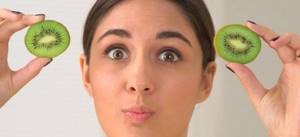
Pure facial juice
This is a wonderful example of a universal product - that is, suitable for all skin types. The juice cleanses oily skin, nourishes dry skin and protects extremely sensitive skin. The face is transformed, acquires a healthy glow from the inside, and rejuvenates. The skin looks and feels noticeably more toned, elastic, and able to withstand natural age-related changes.
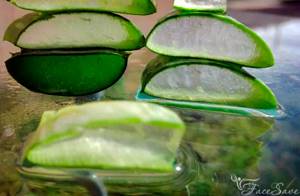
Anti-wrinkle lotion
A couple of the largest leaves are mixed with a liter of cold boiled water. Bringing the mixture to a boil, keep it on low heat for another 5 minutes. Then cool and filter. The lotion is stored in glass in the refrigerator.
Wipe lotion
You don’t have to bother with preparations; this will not make aloe juice any less effective. Keep it pure and use it twice a day after washing your face, wiping your face with a cotton pad.
Cosmetic ice
2-3 tablespoons of agave juice are mixed with 100 ml of sage infusion. This mixture is poured into ice molds. You need to wipe your face with ice cubes every day. You tone the skin and help it fight acne.
Where can I get juice?
Quick and easy - go to the pharmacy
It is not at all necessary to grow agave at home; you can purchase its juice at an affordable price at your nearest pharmacy. The medicinal value of the pharmacy version is identical to homemade preparations.
You can find 4 release forms:
- packs of ampoules of 1 ml;
- glass bottles of 50 and 100 g;
- liniment (liquid ointment);
- tablets - this is not suitable for us, because... they are intended for oral administration.
Ampoules are most often used to smooth the skin. They are convenient in terms of dosing, storage and time saving. “Industrial” aloe juice for wrinkles is usually produced in the form of an extract. You will need less of it - don’t forget to dilute it.
It’s fun and time-consuming to make your own juice
This is easy to do, but let us warn you right away that it will take time! You will need aloe to be at least three years old, since only an adult plant has the required concentration of substances with medicinal properties. Most of the pulp is contained in the wide leaves of the Barbadensis variety.
Step by step instructions for preparing aloe vera juice for skin:
- 7-14 days before pruning, stop watering the plant;
- cut off the lower wrinkled leaves of the plant near the trunk (they contain the most vitamin-rich liquid);
- Rinse cut leaves with water;
- dry the leaves on a towel until moisture completely disappears from the surface (this will take at least half an hour);
- wrap the leaves in foil or thick paper and place them in the refrigerator for 2-3 weeks - this is done to activate them (in an unfavorable environment, the production of biostimulants begins);
- remove the leaves from the refrigerator, cut off the skin, grind the gel they contain with a knife or blender and place in a glass container;
- dilute the resulting mass (3 parts water to 1 part juice);
- let it brew for 120 minutes;
- pass through gauze or a strainer - aloe juice for wrinkles is ready!
Watch video instructions:
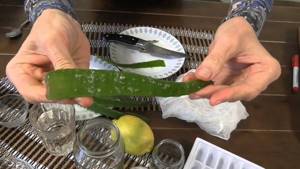
Storage tips
Everything is clear with ampoules and vials - there are instructions in the package. But with juice prepared at home, you will need to adhere to the following rules:
- try to use the resulting liquid immediately;
- in the refrigerator at normal temperature, aloe is stored without loss of properties for no more than 2 weeks;
- cosmetologists recommend using dark glass containers - the absence of light has a beneficial effect on the composition;
- to increase shelf life in the refrigerator, you can dilute it with alcohol in a ratio of 4:1, but remember that alcohol has a tannic (drying) effect on the skin, which will somewhat conceal the effect of the product;
- ice molds are well suited for long-term storage - you can pour the juice into them and put them in the freezer, but keep in mind that the beneficial properties will decrease after defrosting;
- protect the mixture from bacteria: the consistency, color and smell should remain unchanged.
In what form to use aloe juice for the face against wrinkles is up to you. Some people prefer to cook with their own hands, while others prefer to buy a preparation and immediately begin the procedures. One thing is for sure - this natural doctor will become your reliable assistant in the fight against skin aging.
Aloe gel in its pure form
The aging process can slow down aloe vera leaves from 3 years of age. Therefore, it is better to leave the “young animals” to ripen; they do not have a particular concentration of benefits.
To use aloe gel, keep the cut leaves in a cool place without light for one to two weeks (for example, on the “warmest” shelf of the refrigerator, at the bottom). If time is of the essence, wait longer. It turns out that the bioactivity in cut leaves is much higher, which means the quality of aloe properties increases significantly.
How to extract the gel correctly
It may seem simple, but doing it right will ensure maximum benefit.
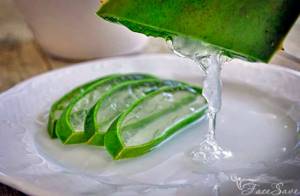
- Cut off the leaves at the very base. The outer leaves are preferable - they are more “ripe” and there is much more fresh gel in them. One or two sheets will yield one and a half to two cups of gel. This product spoils quite quickly, so don't make too much at once.
- We wash the leaves under the tap. This is mandatory: so that invisible dirt and microorganisms from the surface of the leaf do not get on the skin.
- Place the leaves in a cup in a vertical position. We wait about 10 minutes until the light brown liquid—resin—flows out. It contains latex, which can cause irritation.
- Cut off the skin from the flat side and use a spoon to remove the “meat” of the leaf.
If you do not plan to use the pulp now, store it in ice-cold molds in the refrigerator. Unfrozen, it will last a couple of weeks at most.
To keep the gel for 30 days or longer, mix every quarter cup of aloe pulp with 500 mg of vitamin C powder or a couple of drops of vitamin E in oil - these are natural preservatives. This mixture needs to be scrolled in a blender.
How to use aloe gel
The first rule with anything your body comes into contact with is to make sure it is safe for allergies. How to apply the gel:
- We blot the cleansed facial skin with a napkin;
- With clean hands, apply a thin layer of gel;
- Leave for a few minutes to absorb. But no more than 10, so as not to cause a feeling of tightness;
- Rinse off with cool water and finish with your usual cream to nourish or moisturize the skin.
The frequency of the procedure is daily, in the morning or before going to bed.
Taking care of the skin around the eyes
The orbital area is characterized by increased sensitivity and tenderness, since the skin here is thinner than in other areas of the face. Moreover, the skin around the eyes is less protected from the negative effects of the external environment due to insufficient activity of the sebaceous glands in this area.
We regularly strain the skin around our eyes when we blink and squint. As a result, due to excess emotions and frequent work in front of a screen, the skin in the corners of the eyes stretches and loses tone - “crow’s feet” appear. Edema, swelling and pouches often form.
Using aloe for wrinkles under the eyes and other signs of skin aging will allow you to achieve a more even, matte skin color, and thanks to lifting, you can also reduce bruises. Success in getting rid of wrinkles is largely determined by how mature your skin is. In any case, you are guaranteed to smooth out wrinkles for a short period of time: the effect will last for several hours, which will be enough to go out into the world. Of course, after that your face won’t turn into a pumpkin, but it will again demand attention.
Pure aloe for crow's feet
Impact: prevention of wrinkles in the corners of the eyes with quick results.
Usage:
- put the cotton pads in the freezer (10 minutes will be enough);
- Apply fresh agave pulp extract to wrinkles;
- wait 10-15 minutes.
Advice! When applying aloe juice to the skin around the eyes, use the rules of facial massage: lower eyelid - move from the outer edge to the bridge of the nose; upper eyelid – from the inner edge – outwards.
Another way to invigorate your skin is to rub it with ice cubes made from aloe juice.
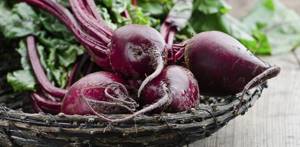
Night compress with aloe for bags under the eyes
Effect: reduction of swelling, bruises and wrinkles located on the eyelids.
Application (step by step):
- chop and mix aloe leaves, celandine and beets in equal quantities;
- squeeze the pulp through cheesecloth to obtain juice;
- the extract is applied at night and washed off the face in the morning.
It is acceptable to use pure or diluted aloe juice for the skin around the eyes, but then the compress is applied to the bags for no more than a quarter of an hour.
Homemade eye cream-gel
Results: nutrition, smoothing of wrinkles, elimination of skin irritations, removal of puffiness.
Instructions:
- mix aloe juice (3 teaspoons), sesame oil (15 ml) and tocopherol (2 or 3 drops) until creamy;
- Apply the resulting mass 2 times a day: in the morning after waking up and before going to bed (pre-cleanse the skin);
- store in a glass jar with a lid in the refrigerator.
Pink eye firming cream
Action: restoration of dehydrated skin around the eyes, restoration of elasticity.
Preparation and use:
- mix agave juice (10 ml), water (2 tablespoons), an aqueous solution of rose essential oil (25 ml), honey (half a teaspoon);
- heat the resulting mixture;
- add pork fat (50 grams) to it and mix until smooth;
- Before going to bed, use your fingertips to gently tap the cream into the “web” around the eyes;
- excess product can be removed with a napkin;
- storage - in a jar in the refrigerator.
Aloe Vera Lotions
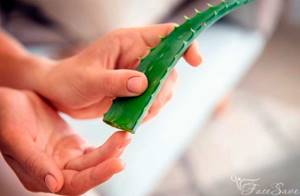
Fading skin. Cut 2 fleshy aloe leaves, add water. Bring to a boil, cook for 7 minutes over low heat. Let cool and strain.
Dry skin and whitening. Mix grated cucumber and aloe in equal proportions along with the peel (remember the thorns). Dilute with your favorite base oil - olive, wheat germ, almond or sunflower. Beat the mixture with a blender, strain and pour in the same amount of boiled water.
Invigorating effect. Agave juice, a few balls of vitamin E in oil, a little tea (preferably herbal) and a couple of drops of mint oil very refresh not only the skin of the face, but also the thoughts.
Problem skin. Alcohol or regular vodka is mixed with aloe juice in a ratio of 1 to 4.
Inflammation-prone skin. A decoction of sage and plantain is mixed with rose water and aloe juice. The lotion copes well with clearly protruding capillaries.
In addition to lotion, you can prepare a tonic. The principle is the same, only the concentrated ingredients need to be diluted with even more liquid.
Ideally, take not water, but infusions or fresh decoctions of various herbs, as well as herbal teas.
We look at the root, or rather at the leaves
Do not rush to glance at a possible test subject standing on the windowsill. You should first make sure that your option is suitable. The fact is that there are several types of plants. Two of them have the greatest range of healing qualities: tree aloe, which is also called agave, and aloe vera (Latin name - Aloe barbadensis).
For outdoor use at home, the first – tree-like option – is best suited. And if you have just such a copy on your window, please accept our congratulations!
Anti-age medicine is the plant juice hidden in the leaves: it is an indispensable natural remedy for aging and dry skin, which effectively affects wrinkles and other signs of aging. In addition to cosmetology, the juice is also used in medicine against eczema, pyoderma, psoriasis and the treatment of other skin diseases.
It contains a whole arsenal of substances: natural minerals, vitamins A, groups B, C and E, folic and acetylsalicylic acids, bioflavonoids, enzymes, allantoin and pectins.
Let's take a closer look at the medicinal properties and understand exactly how aloe helps against wrinkles around the eyes, bags and bruises:
| Effect | Impact |
| Smoothing and firmness | By promoting the production of collagen and elastin, aloe cosmetics rejuvenate, maintain skin elasticity, delay the appearance of new wrinkles and make existing ones less pronounced. |
| Moisturizing and regeneration | The juice of the plant helps deliver beneficial components to the deeper layers of the dermis, which leads to the restoration of hydrolipid balance and healing through faster renewal of damaged tissues. |
| Free Radical Protection | The natural UV filters contained in the plant help protect the dermis from the aging effects of free radicals that the sun's rays bombard us with. |
| Cleansing | Agave will become indispensable for women with problem skin: the juice eliminates excess oil, cleanses the face, and visually smoothes enlarged pores. |
| Antiseptic | The antibacterial and anti-inflammatory properties of aloe have long been proven. It perfectly relieves allergic reactions, redness, disinfects the epithelium, and copes with burns. |
Who is not suitable for aloe vera?
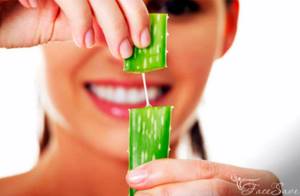
Individual intolerance to aloe is a rare thing, but it does exist. Contraindications for oral use of agave:
- Gallbladder and liver diseases;
- Diseases that involve the possibility of bleeding (uterine, stomach, hemorrhoids);
- Cystitis;
- Inflammation of the gastrointestinal tract.
Also, do not apply aloe juice (especially in its pure form) to skin with pronounced vascular cobwebs.
Check all components of masks for individual tolerance, especially if you have very sensitive skin. There are many recipes, you can invent them yourself. Therefore, if you doubt the composition, do not take risks - look for another option.
